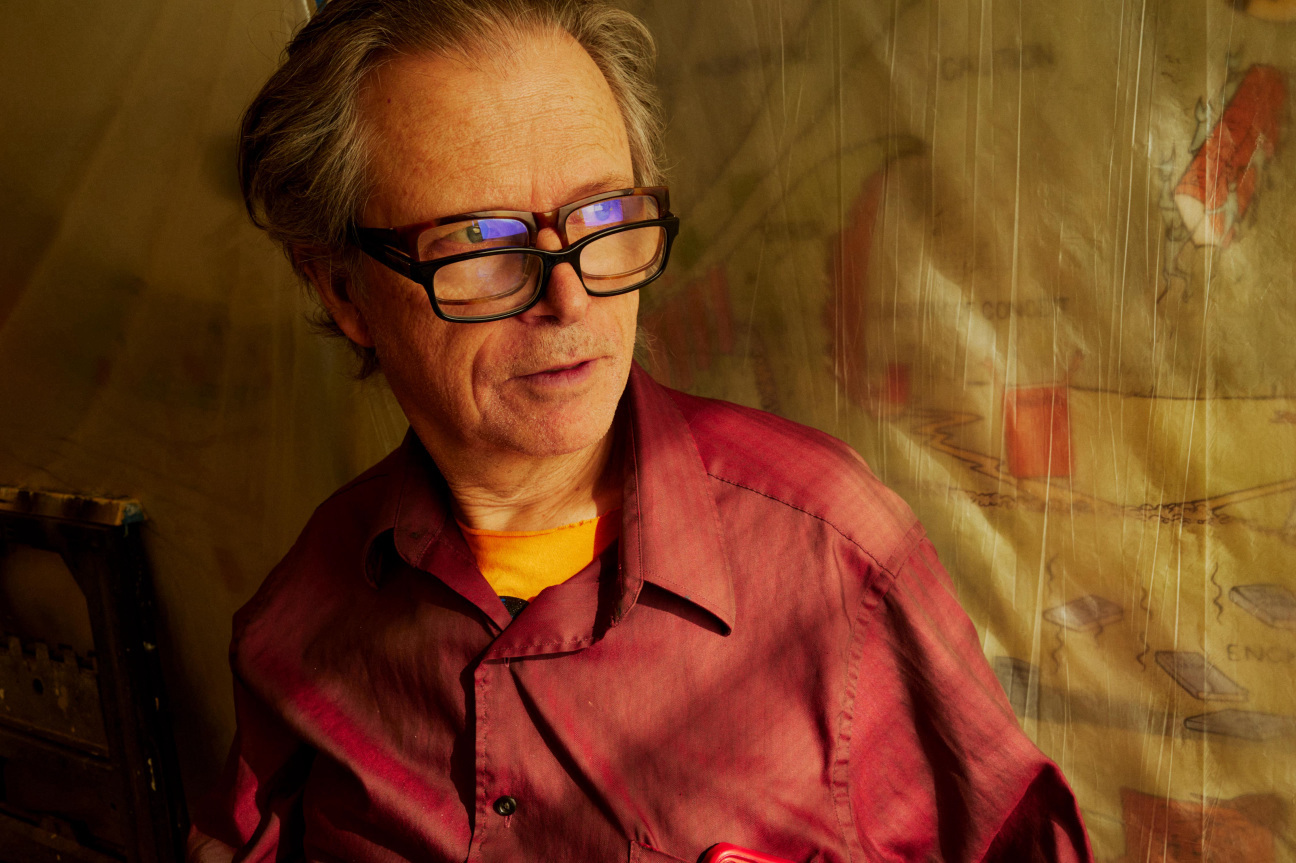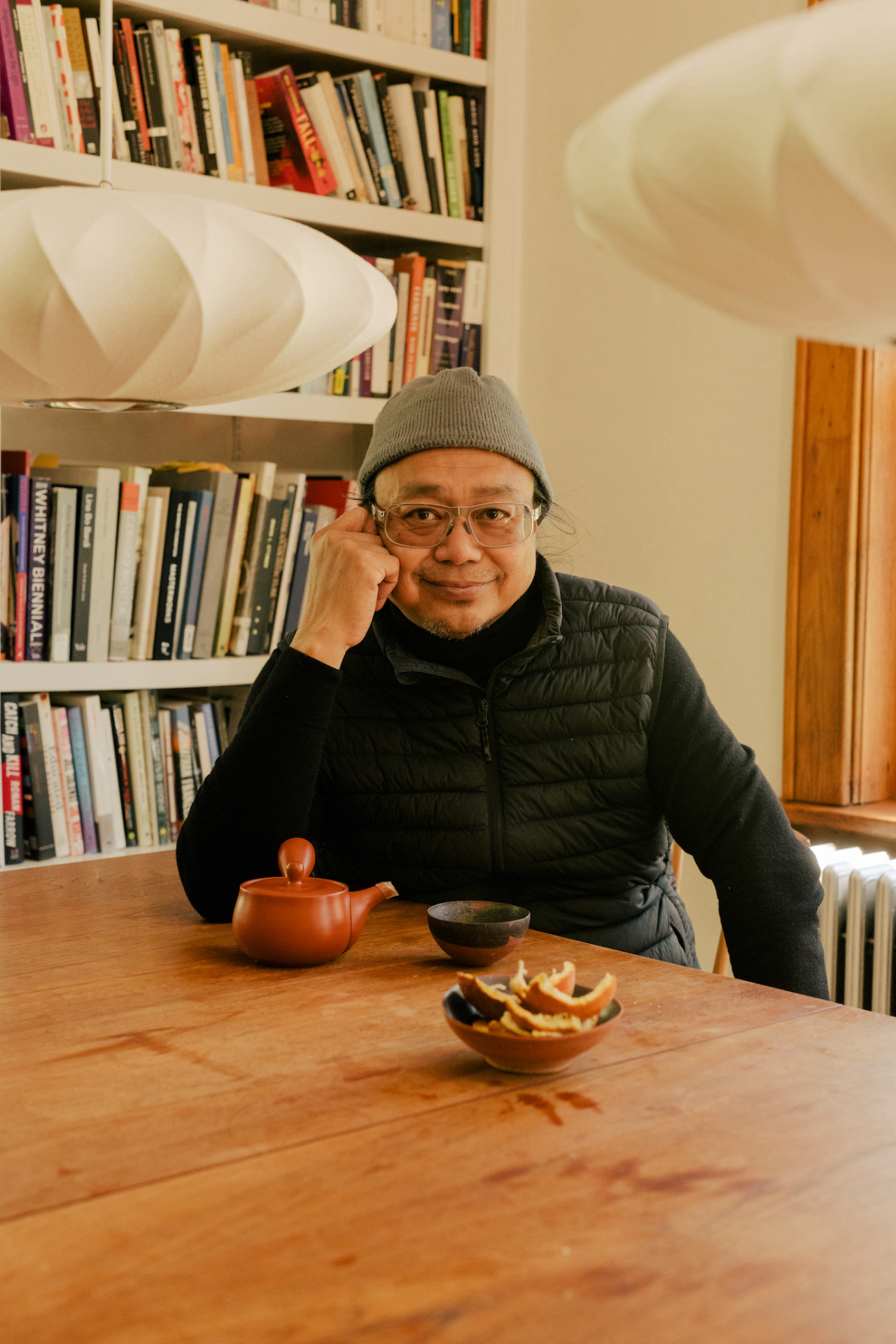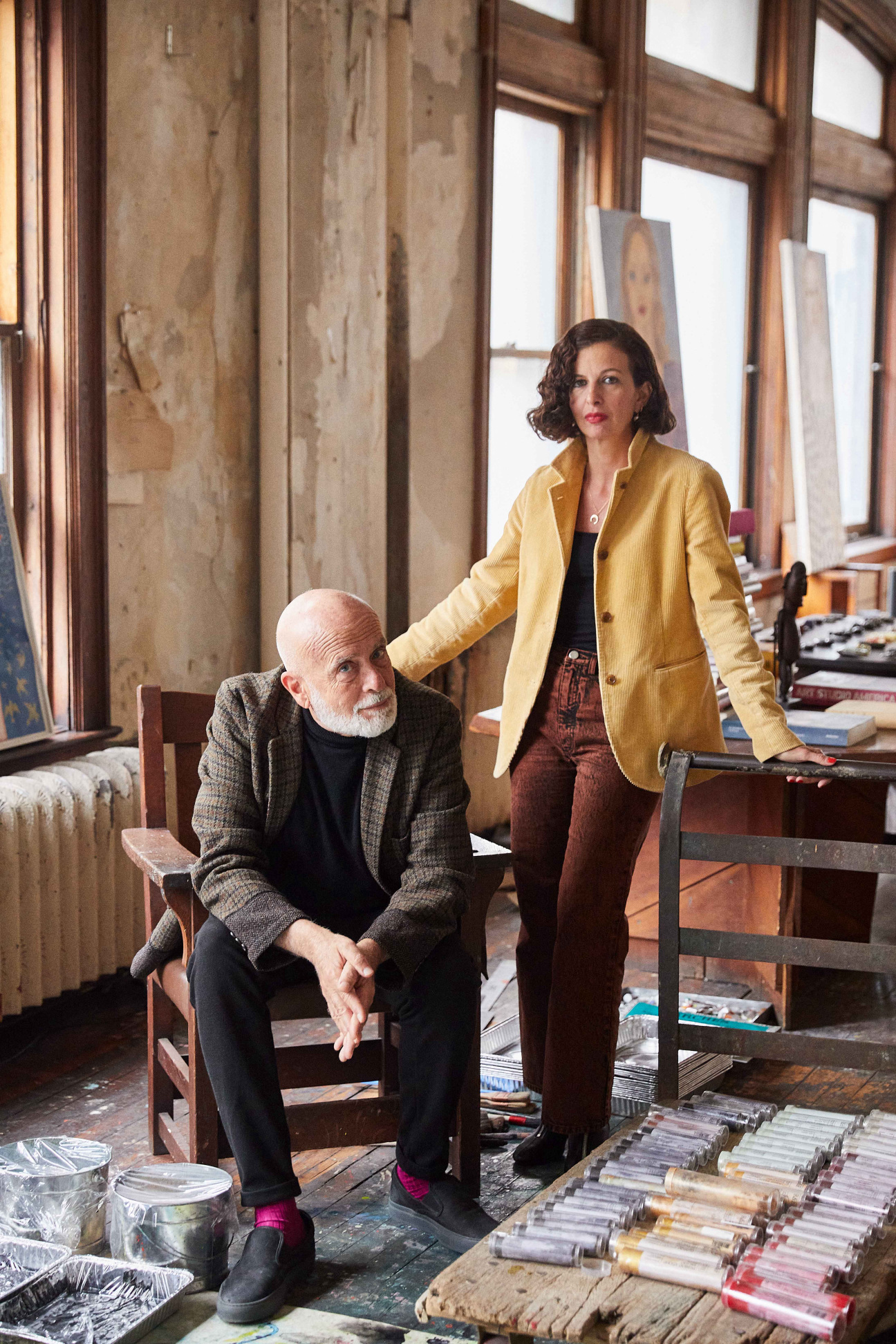
1. Is Jim Shaw Too Weird for the Art World?
By Rose Courteau
The artist Jim Shaw's studio sits in a white stucco building on North Figueroa Street in the Los Angeles neighborhood of Highland Park, sandwiched between a jiu-jitsu academy and a small art gallery, across from a cluster of bungalows. I wonder if I’m in the right place when I arrive there this past winter, just as a red Kia slows to a stop and parks in front. Out climbs Shaw. Such disorientation is similar to the not unpleasant feeling of talking with the artist himself. Like his adopted city of LA, Shaw’s mind is sprawling: regardless of what he’s talking about, his voice maintains a consistent, almost reportorial register, like a stripmall advertising diverse businesses with identical signage. (At one point, he manages to invoke chicken houses, magic mushrooms, and the Iran-Contra affair in scarcely more than a minute.)
Keep reading here.

2. Wangechi Mutu Stages a Family Reunion
By Emily Lordi
As Wangechi Mutu Zooms with me from her sunset-lit Nairobi studio, her team in New York, where it’s still morning, is at work preparing for the Kenyan-American artist’s show at the New Museum. One aide makes wrinkles in Mutu’s sculptural fabrics; another gouges gallery walls with what the artist calls “wall wounds.” In a matter of days, she will join these friends, some of whom have come back to work with her after 20 years, for a gathering she describes as a family reunion. The family reunion metaphor might also apply to her works themselves—as we speak, Mutu’s paintings, collages, videos, and sculptures are traveling from across the world to convene in the museum.
Keep reading here.

3. The Film World Doesn’t Know What to Make of Ja’Tovia Gary
By Rose Courteau
Ja’Tovia Gary’s new short film, Quiet As It’s Kept, begins with a video clip by Mikhaela Jennings. “I literally told you chitterling-eating bitches: the girls that get it, get it, the girls that don’t, don’t,” says Jennings, better known by her TikTok handle @KhaeNotBae. “Obviously you don’t get it, ’cus you’re not that girl.” You might have already seen this video, which went viral after Jennings uploaded it in 2021 to address commenters who didn’t like her hair—though it’s more likely that you’ve heard her disembodied voice, high and crisp, repurposed by other TikTok creators to sound off on everything from weaves and turmeric masks to their preferences for room-temperature drinking water or granny panties. This particular phenomenon of Black speech being ventriloquized or parodied without credit or context is “kind of digital minstrelsy,” says Gary, who first speaks to me over Zoom in January from her home studio in Dallas, Texas.
Keep reading here.

4. Anna Uddenberg Translates Reality TV into Sculptural Simulacra
By Ella Martin-Gachot
Anna Uddenberg left the debut of “Continental Breakfast,” her show at Meredith Rosen Gallery, surprised. For her, New York was synonymous with loud, raucous crowds. “But I've never been to a more quiet opening,” the Swedish artist remembers over a Zoom call. “It was dead silent. I was kind of shocked at how obedient everybody was.” She attributes the hush to the performers that activated the show’s sculptural elements on opening night; perhaps the audience found them intimidating.The artist assembled steel, leather, fake rattan, and acrylic glass to generate pseudo-architectural structures that evoke airport massage chairs, Segways, and subway poles as much as they echo BBL recovery pillows and crutches. It’s a shift from the superficiality of selfie culture, “It-girls,” and instrumentalized mindfulness to the visual language of what the artist calls “non-spaces.”
Keep reading here.

5. Artists Peter and Sally Saul Have Been One Another’s Muse for 50 Years
By Travis Diehl
“I’ve had two lucky moments,” says painter Peter Saul. “The first one was way back in the 1950s, when I met an art dealer who would support me for the next 33 years. The next was in 1973, when I met Sally.” As art world couples go, the Sauls have to be one of the most enduring. Sally, an accomplished sculptor, was born in Albany, New York; Peter grew up in San Francisco. After some youthful meanders, they both migrated to the Bay Area, where they were introduced by mutual friends. That was 50 years ago. Peter’s career trajectory matches his irrepressible style. “I didn’t think of myself as an artist, really,” he admits. “I thought of myself as a rebel against the idea of a normal workday. I wanted to stay home with a beautiful woman and do anything I wanted.” He’s pretty much succeeded.
Keep reading here.

By Kat Herriman
Digestion is never instantaneous. Its nature is process. It spans hours, sometimes centuries. For example, a meal of rice noodles dressed with tamarind sauce and peanut crumbs—served in February 1990 as one of artist Rirkrit Tiravanija’s early food works, untitled 1990 (pad thai)—was probably extruded through the intestines of participating New Yorkers overnight. But the radicality of the gesture remains deep in the guts of the art world, pervading our cultural biome and the way we see ourselves as artists and viewers. It is into these roiling bowels that curators Ruba Katrib and Yasmil Raymond dared to venture, bringing us “A LOT OF PEOPLE.” The MoMA PS1 show is the inaugural U.S. survey of an artist who, for four decades, has actively worked against the shelf life of facts, objects, and identity by destabilizing (and simultaneously elucidating) the fungible borders between author and audience, material and idea, biography and lived experience.
Keep reading here.

7. For Father-and-Daughter Artists Francesco and Chiara Clemente, Portraiture Is the Family Business
By Max Blue
For painter Francesco Clemente and his daughter, documentary filmmaker Chiara Clemente, intimate portraits have always been a central part of art-making. But how has the pair’s relationship influenced their identities and individual practices? Francesco’s nearly surrealist watercolors and oils present strange characters and dream-like scenes laden with symbolism. He is also known for his stylized portraits of fellow artists, a theme that is the central focus of Chiara’s practice. Her films, which she likewise refers to as “portraits,” are poetic narratives grounded in an equally strong aesthetic sensibility. The father and daughter’s close bond has resulted in a shared ethos—a kindred approach to looking at people and the worlds that they inhabit.
Keep reading here.

8. Hernan Bas Didn't Paint the Works in His Show at The Bass. His Alter Egos Did.
By Annabel Keenan
“I already know what the headlines will be: Bas at The Bass,” jokes Miami-based artist Hernan Bas as he prepares the final works for his solo show, “The Conceptualists,” at his hometown museum. “It’s fitting though,” he admits. “The show is a play on conceptual art, so I don’t mind a pun.” Known for his expressionistic paintings of androgynous young men, Bas has often embraced the double entendre. “The Conceptualists” expands on his interest in queerness, desire, the occult, and the absurd, but does so through the creation of fictitious conceptual artists who engage in eccentric behavior as part of their practices.
Keep reading here.

9. Painter Doron Langberg’s Journey to Art-World Stardom Started With a Sex Tape
By Dean Kissick
For his recent solo presentation with Victoria Miro Gallery at Frieze Los Angeles, Doron Langberg, 37, exhibited a suite of oil paintings of flowers in the mountains of Israel, where he grew up; of friends and lovers napping in the dunes of Fire Island, New York, the iconic queer and artistic holiday destination where he spent last summer; and of passionate sex. We speak in Upper Manhattan, during golden hour. Amber light reflects in the skyscrapers downriver. Against the backdrop of the illuminated city, as day turns to night, he talks passionately about his love of painting and how he arrived, along a winding path, as one of the most talked-about stars of figurative painting’s new wave.
Keep reading here.

By Ella Martin-Gachot
“That was one of the great euphemisms of all time,” says Judy Chicago across the screen, her hand punctuating every word. The 84-year-old artist is recalling a statement made by de Young Museum Director Thomas Campbell on the occasion of her first retrospective in 2021. During “a press conference or something,” he declared that she “had been marginalized for decades.” This mammoth understatement, as Chicago sees it, resurfaced as the artist began preparations for her largest survey to date, “Herstory,” with the New Museum’s Edlis Neeson Artistic Director Massimiliano Gioni. She had been “marginalized,” she realized, because she was working in an entirely different lane. “Museums have been trying to figure out how to add women and artists of color around the edges,” she tells me. “But there is an unknown alternative paradigm which has to do with women’s history. That’s the paradigm I’ve been working out of.”
Keep reading here.










 in your life?
in your life?

